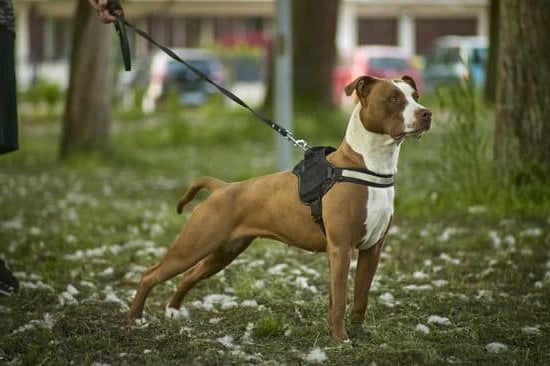Are you a dog owner looking to improve your furry friend’s behavior? Dog training is essential in ensuring a happy, well-behaved pet.
Training your dog not only helps in establishing a strong bond between you and your pet but also ensures their safety and the safety of others.
In this article, we will explore the importance of dog training, basic commands every dog should learn, positive reinforcement techniques for training, common behavior problems and how to address them, training tools and equipment for effective dog training, the benefits of professional dog training, tips for training puppies vs. older dogs, and advanced training methods for obedience and agility training.
Dog training is crucial in helping your pet understand what is expected of them. It teaches them proper behavior and helps prevent potential problems or accidents. Whether you have a new puppy or an older dog with some behavioral issues, proper training can make a world of difference. From teaching basic obedience commands to addressing common behavior problems such as aggression or separation anxiety, effective dog training can help create better communication and understanding between you and your pet.
One of the key aspects of successful dog training is using positive reinforcement techniques. By rewarding good behavior with treats, praise, or toys, you can encourage your dog to repeat desired actions. This creates a more enjoyable experience for both you and your pet during the training process.
Additionally, we will discuss various tips for addressing common behavior problems in dogs and provide insight into selecting the right tools and equipment for effective dog training. Whether you are looking to train your furry friend on your own or considering professional assistance, this article aims to provide valuable information on how to ensure a well-behaved and happy canine companion through proper dog training techniques.
Basic Commands Every Dog Should Learn
Sit
Teaching your dog to sit is one of the most basic and essential commands. It not only helps in managing your dog’s behavior but also establishes you as the leader. Using treats to encourage the behavior, gently push your dog’s rear end down while saying “sit” and reward them when they comply.
Stay
The “stay” command is crucial for keeping your dog safe in various situations. Start with having your dog sit, then with an open palm in front of their face, use the command “stay” while taking a step back. If they maintain their position, reward them. Gradually increase the distance and duration of the stay.
Come
The “come” command is important for calling your dog back to you, especially in potentially dangerous situations or when off-leash. Begin indoors or in a fenced area, call your dog’s name followed by “come” and give lots of praise and rewards when they respond. Gradually practice this command in different environments and distractions.
Learning these basic commands can lay a strong foundation for further training and help establish a healthy relationship between you and your furry friend. Consistency, patience, and positive reinforcement are key elements in successful dog training that creates well-behaved dogs who are a joy to be around.
Positive Reinforcement Techniques for Training
Positive reinforcement techniques are an essential part of effective dog training. This method focuses on rewarding desirable behaviors to encourage their repetition, rather than punishing unwanted behaviors. One of the key principles of positive reinforcement is timing – the reward should be given immediately after the desired behavior is displayed, so that the dog can make a clear connection between their actions and the consequence.
The most common form of positive reinforcement in dog training is the use of treats. Dogs are motivated by food, making it an effective tool for teaching new commands and behaviors. However, it’s important to choose treats that are small, low in calories, and easy for the dog to consume quickly.
In addition to treats, praise and affection are also powerful forms of positive reinforcement. A simple “good boy” or a pat on the head can go a long way in reinforcing good behavior.
Another important aspect of positive reinforcement techniques is consistency. In order for a dog to understand what is expected of them, they need to receive consistent rewards for the desired behavior. This means that all family members and anyone involved in the dog’s care should be on board with using the same commands and rewards during training sessions.
| Positive Reinforcement Techniques | Effectiveness |
|---|---|
| Treats as Rewards | Highly Effective |
| Praise and Affection | Powerful Tool for Reinforcement |
| Consistency in Rewards | Key to Successful Training |
Positive reinforcement techniques not only aid in teaching new commands and behaviors, but they also help strengthen the bond between dogs and their owners. By using this approach, dog training becomes a positive and enjoyable experience for both parties involved.
Common Behavior Problems and How to Address Them
When it comes to dog training, it’s not uncommon for pet owners to encounter behavior problems with their furry friends. Fortunately, most of these issues can be addressed with the right approach and techniques. Here are some common behavior problems that you may come across while training your dog, along with tips on how to address them:
1. Aggression: Aggressive behavior in dogs can be a result of fear, anxiety, or territorial instincts. It’s important to address this issue early on to prevent any harm to other dogs or people. Seek professional help if the aggression is severe.
2. Barking: Excessive barking can be a nuisance for both the owner and neighbors. To address this behavior problem, consider using positive reinforcement techniques such as rewarding your dog when they remain quiet or desensitizing them to triggers that cause them to bark.
3. Chewing: Dogs explore the world through their mouths, and chewing is a natural behavior for them. However, destructive chewing can be a problem. Provide appropriate chew toys and supervise your dog until you’re confident that they won’t destroy household items.
By understanding the root causes of these behavior issues and using positive reinforcement techniques, you can effectively address them during your dog training sessions.
Remember, patience and consistency are key when addressing behavior problems in dogs. With the right approach, you can help your furry friend become a well-behaved and obedient companion.
Training Tools and Equipment for Effective Dog Training
When it comes to dog training, having the right tools and equipment is crucial for effective training. Collars, leashes, and harnesses are some of the basic tools that are essential for teaching your dog proper leash manners and obedience.
For example, a standard flat collar or martingale collar can be used for everyday walks and training sessions. Additionally, a front-clip harness can be beneficial for dogs who tend to pull on the leash as it provides better control and discourages pulling.
Training Aids: Clickers and Treat Pouches
Clicker training is a popular positive reinforcement technique used in dog training that requires a clicker as a training aid. Clickers are small handheld devices that make a clicking sound when pressed, which signals to the dog that they have performed the desired behavior. Treat pouches are also useful for carrying treats during training sessions, providing easy access to rewards for good behavior and enabling quick reinforcement of commands.
Interactive Toys and Puzzle Feeders
Using interactive toys and puzzle feeders can also be beneficial for dog training. These tools not only provide mental stimulation but can also be used as rewards during training exercises. For example, puzzle feeders can be filled with treats as a rewarding incentive for completing commands or tasks. Interactive toys such as treat-dispensing balls or tug toys can also be used to reinforce positive behaviors during training.
Overall, having the appropriate tools and equipment is essential for successful dog training. Whether teaching basic commands or advanced obedience skills, utilizing the right tools can make the process more efficient and enjoyable for both you and your canine companion.
The Benefits of Professional Dog Training
Professional dog training can provide numerous benefits for both your dog and you as the owner. Here are some reasons why investing in professional dog training is beneficial:
- Expertise: Professional dog trainers have the knowledge and expertise to understand different breeds, temperaments, and behaviors. They can tailor training programs to suit your dog’s specific needs, making the training process more effective.
- Behavior Modification: Trainers can address and modify problem behaviors such as aggression, excessive barking, jumping, and leash pulling. They can identify the root cause of these issues and implement appropriate techniques to correct them.
- Consistency: Professional trainers can provide a consistent approach to training, which is crucial for your dog’s learning and understanding of commands. Consistency helps reinforce good behavior and ensures that your dog continues to obey commands even outside of training sessions.
Moreover, professional dog training can also benefit owners in several ways:
- Education: Working with a professional trainer allows you to learn important aspects of dog behavior and communication. This knowledge can help you build a stronger bond with your pet and improve overall obedience.
- Time-saving: While it may seem time-consuming to attend professional training sessions, it can actually save time in the long run. Properly trained dogs are easier to manage at home and in public settings, reducing potential stress and frustration for owners.
- Peace of mind: Knowing that your dog has undergone professional training can give you peace of mind when taking them on walks or interacting with other animals and people. You’ll feel more confident in your ability to control your pet, leading to a more enjoyable relationship with your furry companion.
In summary, enrolling your dog in professional training classes can be an investment that pays off in terms of obedience, behavior modification, education for both you and your pet, time-saving benefits, and peace of mind during daily interactions. With the guidance of a trained professional, you can ensure that your pet receives structured training tailored to their individual needs.
Tips for Training Puppies vs Older Dogs
When it comes to dog training, there are some differences in the approach and techniques when training puppies versus older dogs. Puppies are like sponges, eager to learn and please their owners, while older dogs may have established behaviors that need to be unlearned or modified. One key aspect of dog training for both puppies and older dogs is consistency. Consistency in commands, rewards, and expectations is crucial for successful dog training.
For puppies, it is important to start with basic commands such as sit, stay, come, and leash walking. Short and frequent training sessions are recommended as puppies have shorter attention spans. Positive reinforcement techniques such as using treats and praise can be highly effective in puppy training. Additionally, socialization is an essential part of puppy training to ensure they become well-adjusted adult dogs.
On the other hand, older dogs may require a different approach to dog training. They may have developed certain behaviors that need to be addressed through positive reinforcement techniques. It is important to understand the dog’s history and any potential traumas or triggers they may have. Older dogs may also benefit from advanced training methods such as obedience and agility training to keep them mentally stimulated.
Ultimately, whether you are training a puppy or an older dog, patience and understanding are key components of successful dog training. Building a strong bond with your dog through consistent training will lead to a happy and well-behaved pet.
| Tips for Training Puppies | Tips for Training Older Dogs |
|---|---|
| Start with basic commands | Address established behaviors |
| Use positive reinforcement techniques | Understand the dog’s history |
| Focus on socialization | Consider advanced training methods |
Advanced Training Methods for Obedience and Agility Training
In conclusion, dog training is a crucial aspect of responsible pet ownership. It not only ensures the safety and well-being of your dog, but also strengthens the bond between you and your furry companion. By mastering basic commands and positive reinforcement techniques, you can address common behavior problems and set a foundation for advanced training methods such as obedience and agility training.
Once your dog has mastered basic commands, you may want to consider advanced training methods for obedience and agility. These methods go beyond the basics and challenge your dog to perform more complex tasks with precision and focus. Obedience training helps to maintain control in various situations, while agility training provides mental stimulation and physical exercise for your dog.
When delving into advanced training methods, it is important to seek guidance from professional dog trainers who specialize in obedience and agility training. Their expertise can provide invaluable support as you navigate the intricacies of teaching your dog more advanced skills. Additionally, they can offer insights into how to tailor the training to suit your individual dog’s needs, ensuring a positive learning experience for both you and your canine companion.
In sum, whether you are just starting out with basic commands or venturing into advanced obedience and agility training, patience, consistency, and positive reinforcement are key elements in successful dog training. Remember that every dog is unique, so it may take time to find the right approach that works best for your pet. With dedication and the right guidance, you can help your dog reach their full potential through effective training methods.
Frequently Asked Questions
What Are the 5 Golden Rules of Dog Training?
The 5 golden rules of dog training are consistency, patience, positive reinforcement, proper timing, and setting realistic expectations. Consistency is key to establishing routines and boundaries, while patience allows for gradual learning.
Positive reinforcement helps reward good behavior and proper timing ensures that the dog associates the reward with the correct behavior. Setting realistic expectations means understanding each dog’s individual abilities and limitations.
What Are the 7 Most Important Dog Commands?
The seven most important dog commands are sit, stay, come, down, heel, no, and leave it. These commands form the foundation of obedience training and help establish control and communication between the owner and their dog. Mastering these commands can help keep dogs safe in various situations and ensure good behavior in public.
What Is the Correct Way to Obedience Train a Dog?
The correct way to obedience train a dog involves using positive reinforcement techniques such as treats or praise to reward good behavior. Consistency in practicing commands daily is crucial, as well as keeping training sessions short to maintain the dog’s focus.
It’s important to be patient and understanding of the dog’s learning process while also setting clear boundaries and expectations. Obedience training should be a positive experience for both the owner and the dog as it strengthens their bond and establishes effective communication.

Welcome to the blog! I am a professional dog trainer and have been working with dogs for many years. In this blog, I will be discussing various topics related to dog training, including tips, tricks, and advice. I hope you find this information helpful and informative. Thanks for reading!





